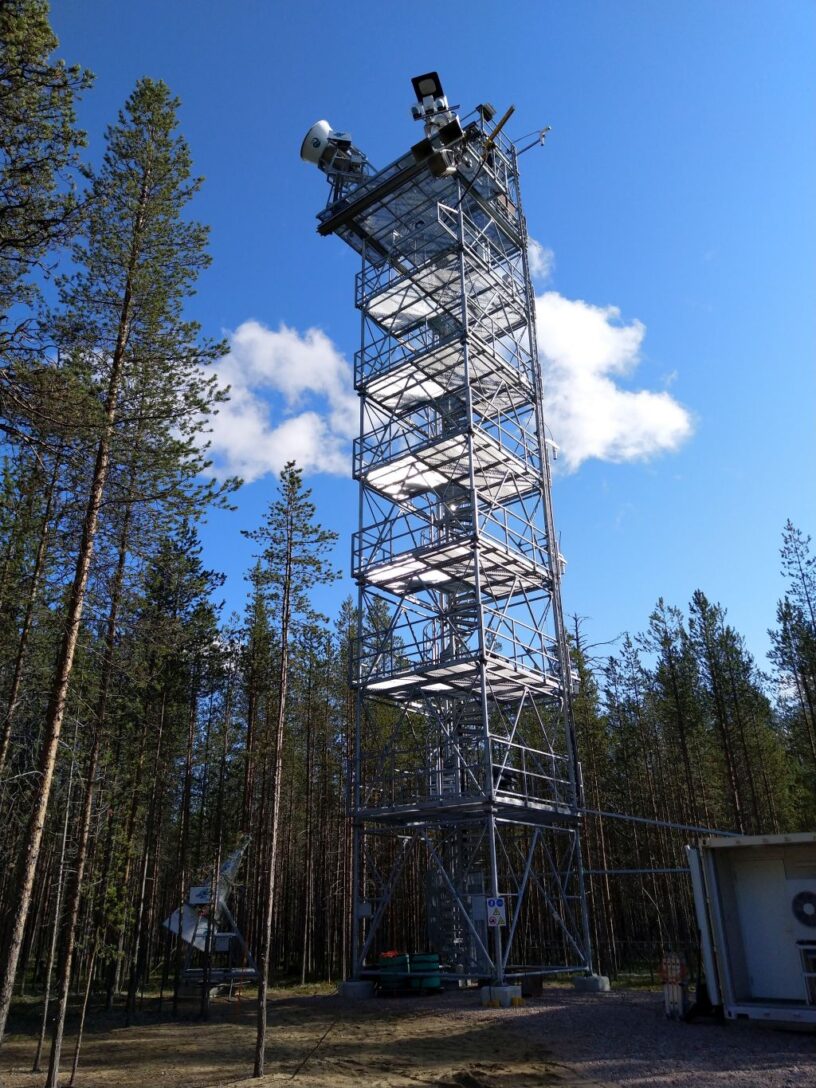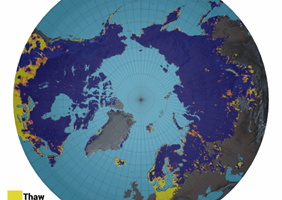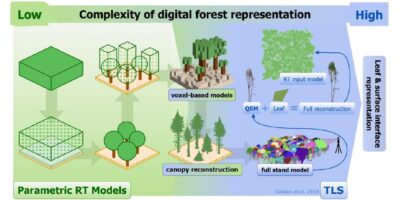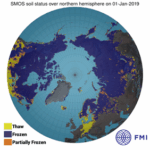“L-band observations of soil and trees in freezing/thawing conditions (LOSTinFTC)” –project has been granted ESA Living Planet Fellowship –funding for two years. The project aims at developing methods for remote sensing of soil freeze/thaw and other parameters at L-band in boreal forests.
The specific objectives are:
1) Development of a model for boreal forest transmissivity at L-band as a function of temperature in freezing conditions
2) Study of methods for detecting soil freeze/thaw status at L-band in a boreal forest in spring thawing season (snow melt)
Passive microwave observations at L-band (1.4 GHz) are able to detect soil freeze/thaw status based on the differences in the electrical properties of ice and liquid water. This method is suitable for detecting autumn freezing, but during spring thawing the liquid water in melting snow confounds the signal from soil; however, the penetration depth of electromagnetic waves at L-band may allow limited retrieval of information from subnivean soils even in snowmelt conditions. Another source of inaccuracy in present F/T retrievals is the liquid water in trees; while the water in soil mostly freezes when soil temperature drops below 0 °C, the water in trees can stay in liquid form down to -40 °C. The amount of liquid water and ice in trees affects the transmissivity of forest and hence the transmissivity of forest is dependent on temperature.
Finnish Meteorological Institute’s Arctic Space Centre (FMI-ARC) in Sodankylä, Finland, hosts a measurement setup, including two ESA ELBARA-II L-band radiometers, which could be used to study both the transmissivity of boreal coniferous forest and detection of soil thawing when snow is melting. The existing infrastructure allows for measurements from above and below the forest, and reference measurements monitor soil, snow and vegetation properties, including snow wetness and tree dielectric permittivity, among other parameters.
The aim of this project is to develop a model for boreal forest transmissivity dependence on temperature and to study possibilities for detecting soil thawing during spring snowmelt.
Previously at FMI-SPACE, a method for detecting soil freezing using space-borne microwave radiometry has been developed (Rautiainen et al., 2018). Now the objective is to focus more on the melting period.
More Information:
Sodankylä Research Infrastructure PI/Research scientist, Anna Kontu, anna.kontu@fmi.fi
Rautiainen, K., Parkkinen, T., Lemmetyinen, J., Schwank, M., Wiesmann, A., Ikonen, J., Derksen, C., Davydov, S., Davydova, A., Boike, J., Langer, M., Drusch, M. and Pulliainen, J.: SMOS prototype algorithm for detecting autumn soil freezing, Remote Sens. Environ., 180, 346–360, doi:10.1016/j.rse.2016.01.012, 2016.








Leave a Reply
You must be logged in to post a comment.